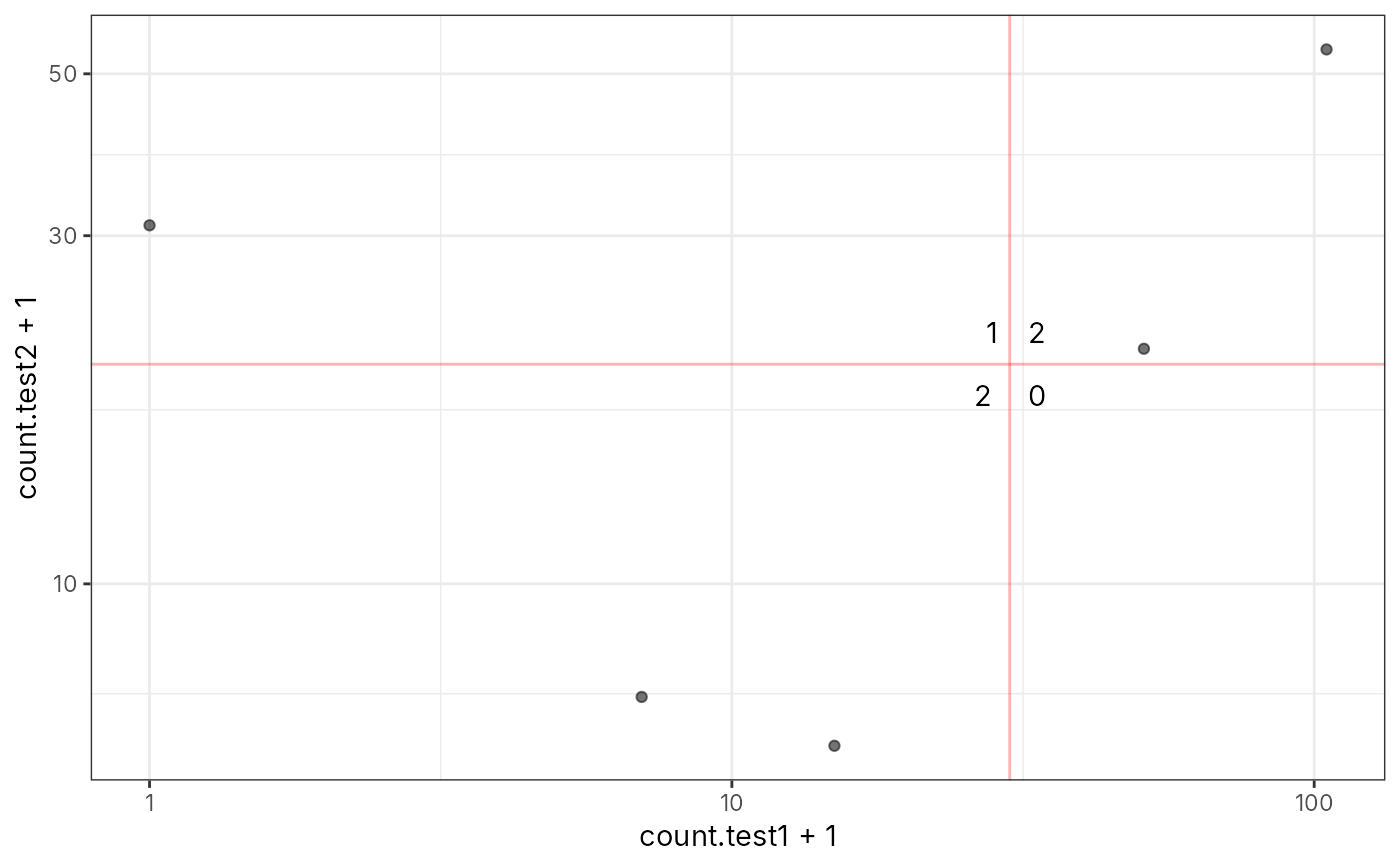Barcode read count 2D scatter plot for given pairs
Source:R/AllGenerics.R, R/method-plot_barcode.R
bc_plot_pair.RdDraws scatter plot for barcode read count between given pairs of samples with
a BarcodeObj object. This function will return a scatter plot matrix
contains the scatter plots for all given sample pairs.
bc_plot_pair(
barcodeObj,
sample_x,
sample_y,
count_marks_x = NULL,
count_marks_y = NULL,
highlight = NULL,
log_coord = TRUE,
alpha = 0.7
)
# S4 method for class 'BarcodeObj'
bc_plot_pair(
barcodeObj,
sample_x,
sample_y,
count_marks_x = NULL,
count_marks_y = count_marks_x,
highlight = NULL,
log_coord = TRUE,
alpha = 0.7
)Arguments
- barcodeObj
A
BarcodeObjobject.- sample_x
A character vector or a integer vector, specifying the sample in
xaxis of each scatter plot. It can be the sample names in BarcodeObj or the sample index value.- sample_y
A character vector or a integer vector, similar to
sample_x, specifying the samples used foryaxis. It can be the sample names or the sample index value.- count_marks_x
A numeric vector used to mark the cutoff point for samples in x axis
- count_marks_y
A number vector used to mark the cutoff point for samples in the y-axis.
- highlight
A character vector, specifying the barcodes that need to be highlighted.
- log_coord
A logical value, if TRUE (default), the
xandycoordinates of the scatter will be transformed by log10.- alpha
A numeric between 0 and 1, specifies the transparency of the dots in the scatter plot.
Value
Scatter plot matrix.
